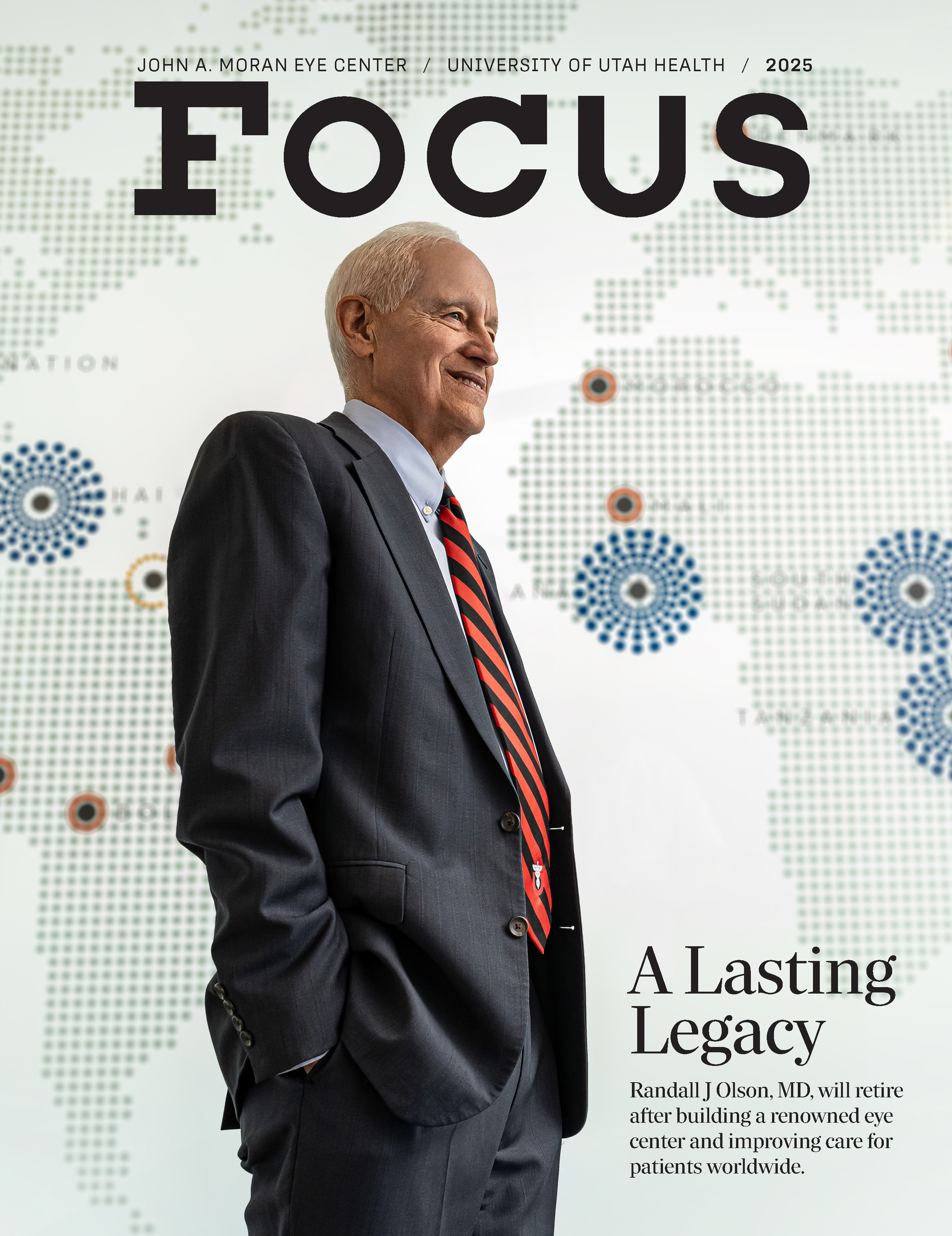
With a new gene therapy for age-related macular degeneration in clinical trials, Gregory S. Hageman, PhD, is ready to take on glaucoma.
Age-related macular degeneration (AMD) and glaucoma are slowly robbing a combined 23 million Americans of their sight. There is no cure for either disease, and doctors have limited treatment options with no guarantee of saving vision.
Perhaps no one is better positioned to change this paradigm than Gregory S. Hageman, PhD. He accepted the position of executive director of the Sharon Eccles Steele Center for Translational Medicine (SCTM) at the John A. Moran Eye Center more than a decade ago because he wanted to make a difference in the lives of millions of patients.

To do so, he collaborated with the Utah Lions Eye Bank to build the largest repository of donor eye tissue in the world.
Hageman and his team examine the DNA from the donor tissue samples and pair them with the donor’s genotype and medical records to understand the biology of each disease and advance research.
“We have built an incredible resource that does not exist anywhere else,” said Hageman.
He attributes part of his success to a key lesson: “Simply put, if one is going to make progress on human disease and the notion of precision medicine, one needs to study human tissue.”
A LEAP FORWARD
Hageman and his team have used the donor eye tissue to conduct a multi-year, massive gene expression study to understand the triggers for AMD, a leading cause of blindness for adults 55 and older. They have identified genes on chromosomes 1 and 10 that play an integral role in 90% of all AMD cases.
The team has made the greatest progress in cases associated with a mutation on chromosome 1, the most prevalent form of AMD. This mutation causes the immune system to attack the macula, the specialized, light-sensitive tissue in the back of the eye. With the macula compromised, patients have difficulty focusing on objects directly in front of them, limiting their ability to read, drive, and recognize faces.
This genetic understanding allowed the SCTM to develop its first gene therapy, which reintroduces a protective form of the mutated protein. The therapy is in clinical trials.
BUILDING ON EXPERIENCE
Hageman explains that, unlike AMD, glaucoma has been loosely tied to more than 80 genes, which complicates developing a therapy based solely on genetics. But lessons learned in his work with AMD as director of the Alan S. Crandall Center for Glaucoma Innovation’s Translational Research Initiative can inform the search for new glaucoma therapies.
Glaucoma is a disease of the optic nerve and retina. The first line of treatment is prescription eyedrops that are ineffective for 40% of patients.
Similar to his research approach with AMD, Hageman’s team is again collaborating with a major American pharmaceutical company. In this case, the team is examining the biological pathways, or molecular changes in cells, that contribute to the progression of glaucoma. The company has so far sequenced more than 7,000 proteins from more than 3,000 genotyped healthy and diseased donor eyes.
The end goal of this project is wider than developing new drugs. Hageman believes there is a chance there may be drugs already approved by the FDA for other illnesses that could be used off-label to mitigate the progression of glaucoma.
“You never know what pathway might come to our attention,” he said. “You never know where an existing drug might already be available that could benefit a patient with glaucoma.”
Hageman believes that new therapies are within reach with the resources available at the University of Utah, the SCTM’s excellent team of researchers and collaborators, and continued support from philanthropists.
“There is hope,” said Hageman. “It is going to take some time, but we know what we need to do, have the resources to expedite discovery, and the talent to make new therapies possible.”
